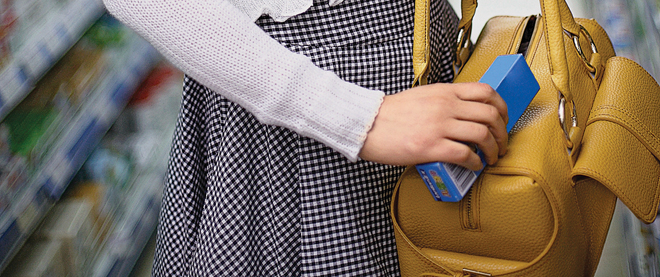Shoplifting is flourishing worldwide
Why is steak on everyone’s top 10 list?
Share

This article was updated on Feb. 15, 2011
In 1800, the first known trial of a shoplifter who was not a known criminal took place in Bath, England. Jane Leigh Perrot, 55, was not exactly the Winona Ryder or Lindsay Lohan of her day, but she was a respectable married lady of means, Jane Austen’s aunt no less. Leigh Perrot claimed in court that the shopkeeper was running a scam—that he had inserted the white lace in question into her legitimate purchase so that he could shake her down outside the shop, extorting a bribe for not reporting her to the magistrate.
Leigh Perrot offered no compelling evidence on that point, however, and it seems more likely the jury was swayed by her lawyer’s first-ever use of the so-called celebrity defence, which would echo through prominent shoplifting cases for the next two centuries: why would a prosperous woman like my client risk liberty and reputation to steal a trinket she could easily afford to buy? In any event, she was acquitted, and it wasn’t until the 1980s that Aunt Jane emerged from family records—combed exhaustively by Austen scholars for their own purposes—as a compulsive kleptomaniac. (Nursery plants were particularly at risk when she came to visit.)
It’s no accident this strangely contemporary event took place in England, the first commercially modern nation, argues Rachel Shteir, author of The Steal: A Cultural History of Shoplifting, or that the concept of kleptomania was developed in early 19th-century Paris, home to some of the world’s earliest and most alluring department stores. Kleptomania, Shteir points out, was both a key concept in early psychiatry and a social necessity, a defence that kept respectable women from ending up in the same rat-infested cells as their poor sisters. It still performs that function today, when a defence is needed at all. The rate of detection—an estimated one person caught per 48 thefts—makes shoplifting among the safer crimes to commit.
It’s also a modern epidemic. The so-called crime tax—what Americans pay extra every year to make up for theft losses from stores, and for anti-theft measures—has [as of 2011] reached $450 a head annually. Experts estimate the American “shoplifting population” at 10 per cent—some 30 million strong—with only a fraction having serious mental health issues. Shoplifting’s ebb and flow is not connected to other crime patterns or to the state of the economy: it often spikes in boom times, as those not benefiting from increased affluence strive to keep up with those who are, and in downturns, when the stolen objects tend to be more necessities than luxuries.
Thus the annual list of most-stolen items is a mix of must-haves and the desirable. In 2011, Gillette razors and cartridges top the list; batteries come in at No. 5 (“I just didn’t feel like paying for them,” said a judge to the security guard who caught him with a pair); steak made the top 10 for the first time since 2005, a theft that particularly irks supermarket managers who ascribe the motive to feelings of entitlement and not starvation. [Ed’s note: In 2017, according to the top items were designer clothes, denim pants, razors and baby formula.] Middle-class entitlement is, in fact, a major component of the crime: a large-scale study established that Americans with incomes of $70,000 shoplift 30 per cent more than those earning $20,000 or less.
Social upheaval is another powerful factor—the crime spiked 150 per cent between 1960 and 1970, the era of Abbie Hoffman’s Steal This Book. Although women tend to get the kleptomaniac break (sent to mental health facilities rather than jail) or the kleptomaniac stigma (as it’s seen by many feminist critics), men steal as much. But men tend toward auto parts, electronics and power tools; women go for clothing, accessories and cosmetics.
While most of Shteir’s stats are American, it’s clear shoplifting is flourishing around the world. In Japan, as traditional social structures break down, senior citizens have taken to it with a vengeance, forcing jails to add safety bars and adopt low-sodium diets. In 2009, five employees at a Chinese Wal-Mart beat an alleged shoplifter to death. Burka-wearing thieves with deep pockets sewn on the inside incited jewellers in one Indian city to ban the garment.
There is no one cause or kind of shoplifting, Shteir persuasively argues. And insofar as it reveals anything at all about us and our current way of life, it is the overwhelming power of consumerism in modern society.
Top 10 shoplifted items (2011)
1. Gillette razors & cartridges
2. Toiletries & alcohol
3.Clothing
4.Lingerie
5.Batteries
6.Vitamins & pregnancy tests
7.CDs, DVDs
8.Luxury tooth-brushes
9.Instant coffee
10.Steak
Top 10 shoplifted items (2017, National Retail Federation)
1. Designer clothing
2. Denim Pants
3. Razors
4. Infant Formula
5. Designer Handbags
6. Laundry Detergent
7. Cigarettes
8. High-end Liquor
9. Jewelry
10. Teeth Whitening Strips